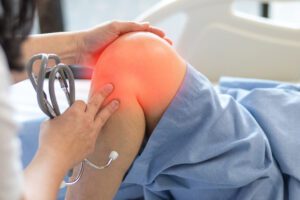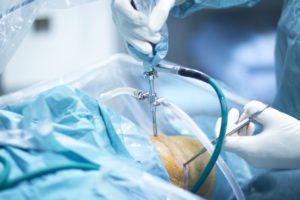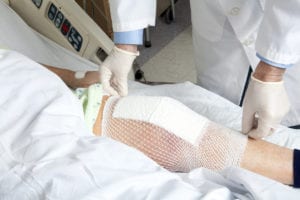Bursitis of the knee is a condition that results from inflammation of one or more bursae in the knee. Bursae are small, fluid-filled sacs located near the large joints throughout the body that act as cushions and help reduce friction between soft tissues. The knee has several bursae, and when they are inflamed, they cause…
Knee Replacement Specialists in North Dakota
Could Arthroscopic Surgery Be Beneficial if You Have a Knee Fracture?
Until fairly recently, it was considered impossible to perform joint surgery without making significantly large incisions. Thanks to advanced modern technology, it’s now possible to conduct surgical procedures using small, thin instruments – requiring only small incisions. In particular, arthroscopic knee surgery can be performed to repair knee injuries, including many types of knee fractures….
How Soon After Getting Arthroscopic Knee Surgery Can I Return to My Normal Activities?
Different knee injuries and conditions require different treatment plans. One of the most common orthopedic procedures done today is arthroscopic knee surgery. It enables both a firm diagnosis and possible partial or complete treatment in one procedure. If you’re having knee arthroscopy done, you will want to understand how to make a swift and full…
Problems of Stiffness After Knee Replacement Surgery
A total knee replacement, also called knee arthroplasty, is one of the most common types of joint replacement surgeries. It involves removing the damaged portion of the knee joint and replacing it with prosthetic materials. Knee replacement is highly successful for relieving knee pain and restoring joint function, but some patients experience knee stiffness following…
Reasons for Arthroscopic Knee Surgery
Arthroscopic knee surgery is a surgical technique that involves the creation of a very small incision into which a flexible, miniature, fiber-optic camera (also known as an arthroscope) is inserted. The arthroscope projects a view of the structures inside the knee onto a monitor, thereby allowing the orthopedic surgeon to examine the knee and repair…
What Are the Disadvantages of Knee Replacement Surgery?
Knee replacement surgery is a procedure that involves replacing the diseased or damaged knee (either partially or totally) with a prosthesis. If you have advanced knee arthritis, you may be a good candidate for the procedure. It is worth noting that, just like any type of surgery, knee replacement surgery has potential risks of complications—something…
FAQs for revision knee replacement surgery
Total knee replacement surgery or arthroplasty is one of the most successful orthopedic procedures performed today. A successful operation can provide substantial relief from pain and highly improved knee function, allowing the patient to return to normal activities. Over 600,000 total knee replacements are performed each year in the United States. Yet, some patients may…
Common Sports Injuries: Types, Treatments, Prevention
Being physically active or playing sports does wonders for your body. However, it also ups your risk for sports injuries. While these conditions are common for physically active individuals and athletes, they are treatable and preventable. Are you a physically active person? Here are the most common sports injuries, how they are treated, and what…
Total Knee Replacement for the Treatment of Osteoarthritis
Osteoarthritis occurs due to the wearing-down of the protective cartilage in a joint. When this cartilage becomes too thin or wears away and is thus no longer able to cushion the bones in a joint from rubbing against each other during movement, it can cause inflammation – resulting in pain, swelling, stiffness, and loss of…
Knee Injuries in Young Athletes
Year-round practices, games, and competitions can make being an athlete very physically demanding, which can put players at risk of injuries. One of the most common sports injuries involves the knee due to all the running and jumping involved in nearly all sports. Your child’s dedication to sports that involve high impact and collisions may…











